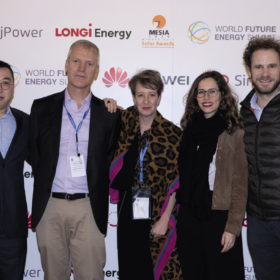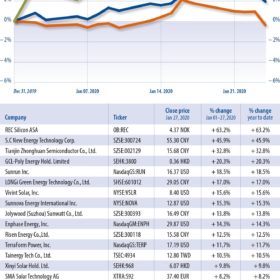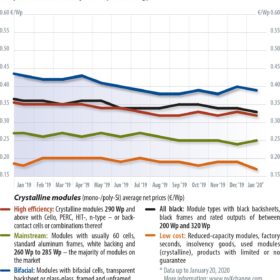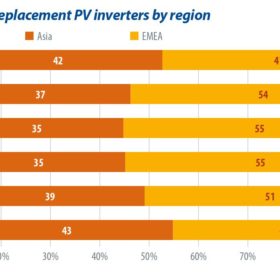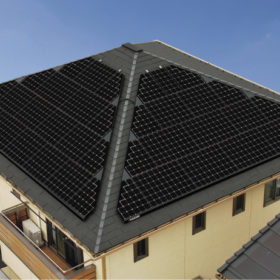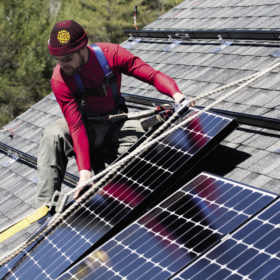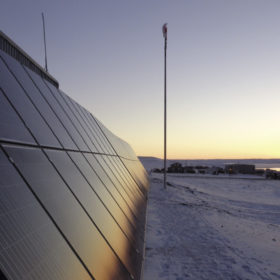Expanding PV’s boundaries
New markets, new applications, new possibilities: falling PV costs along with technical and business-model innovation putting PV in new places and providing the benefits of solar power to an ever-increasing number of people. It’s worth recognizing the innovations that are allowing PV to grow to sometimes unlikely places.
And they’re off
Solar stocks got off to a great start in 2020. In January, the Guggenheim Solar ETF (TAN) increased 4.1% vs. the S&P 500 and Dow, which increased 0.5% and 0.1%, respectively.
Remove the cap to sure up PV sector
Once again, the future of photovoltaics in Germany is being torpedoed by the delaying tactics of the federal government. Once again, the solar companies that are still in business are facing a severe test. And once again, numerous jobs are being heedlessly put at risk. But why?
Out with old inverters, in with the new
Global demand for replacement inverters will likely grow by almost 40% to reach 8.7 GW in 2020, as a large and expanding installed base of aging solar PV installations drives deployment, writes Miguel De Jesus of IHS Markit.
2020 module market forecast
According to PV InfoLink’s database, JinkoSolar topped the 2019 rankings for global module shipments with around 14 GW – far higher than any of its rivals. Notably, this is not the first time Jinko has secured the No. 1 spot; it has avoided slipping from the top as many of its predecessors did in the industry’s earlier years. The company is followed by JA Solar and Trina Solar (each shipping more than 10 GW), and then Longi, Canadian Solar, Hanwha Q Cells, Risen Energy, Suntech, Astronergy, and Talesun.
The beginnings of a post FIT-market
The annual installed PV capacity for Japan is expected to be 7 GW (DC) in 2019, according to RTS Corp. Cumulative PV installed capacity now stands at 63 GW. In addition to the robust introduction of small-scale PV projects, the development of already approved large-scale PV projects under the FIT program was advanced by the end of the year, say RTS analysts Takashi Ohigashi and Izumi Kaizuka.
Californian mandate to deliver more than 1 GW
California, the economic and cultural powerhouse of the United States, has long led the way when it comes to solar deployment – both on the rooftop and at utility scale. The state is now pushing forward with a solar mandate for new homes, which could be a ‘eureka moment’ for the U.S. solar sector.
Shifting geopolitical sands
After a decade of operation, the International Renewable Energy Agency (IRENA) has become an established presence in assisting the deployment of renewables. Now under the leadership of Director General Francesco La Camera, it continues its work on a range of issues pertaining to renewable energy deployment, with a renewed focus on facilitating international investment.
Past the Arctic Circle, one degree at a time
Solar has a small but increasingly important role to play in the Nordic energy transition. And while there is still a gap in PV cost-competitiveness across some markets, interest in solar facades, BIPV solutions and C&I applications is growing.
Remote possibilities
If the Canadian Arctic strikes you as a place that doesn’t have enough sunlight for PV, you wouldn’t necessarily be correct. Although there are periods of 24-hour darkness in winter, there are locations with sufficient sunlight for PV to make a major dent in remote communities’ diesel consumption, reports Anteo Petkovic, from Green Sun Rising.
